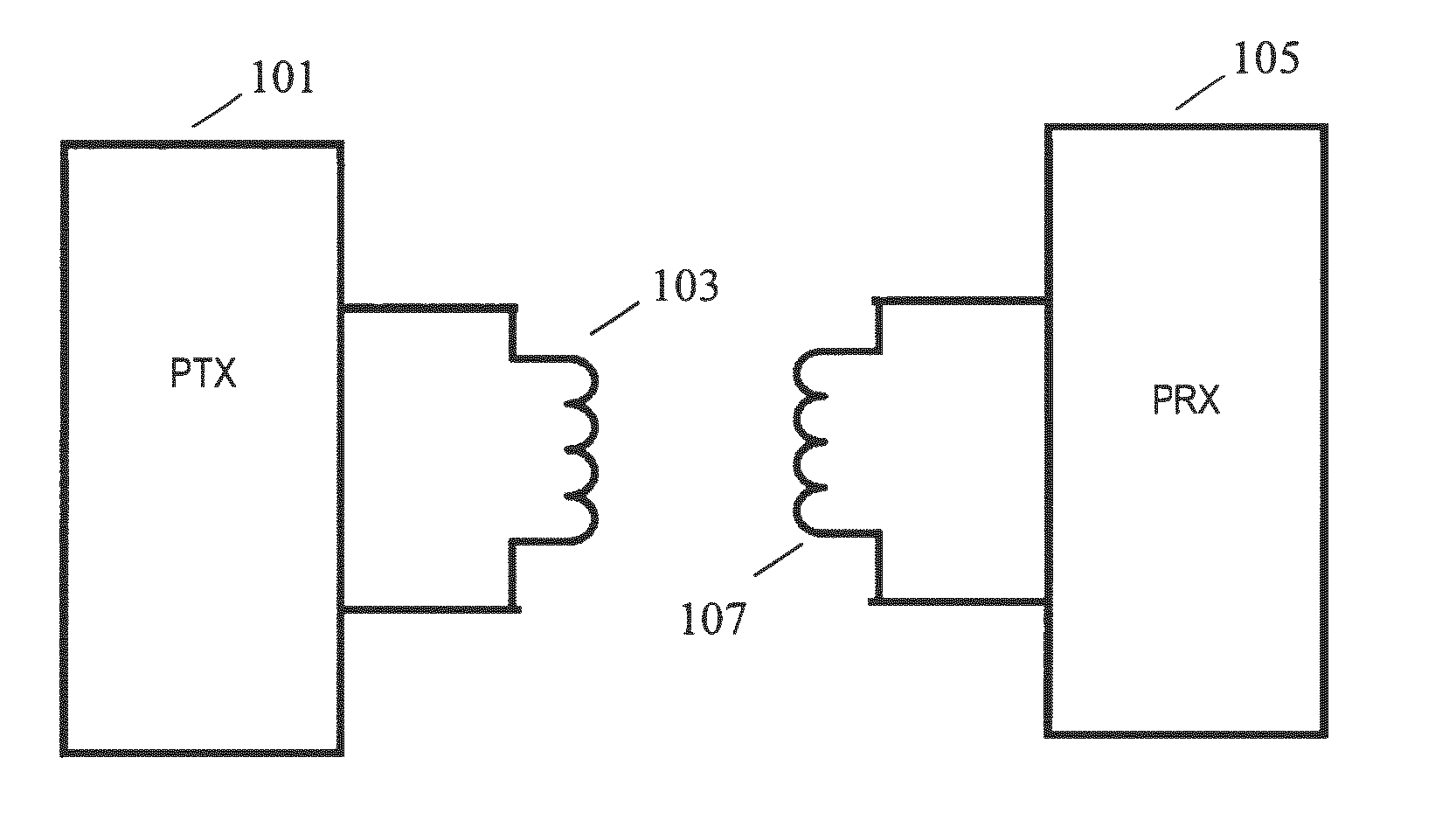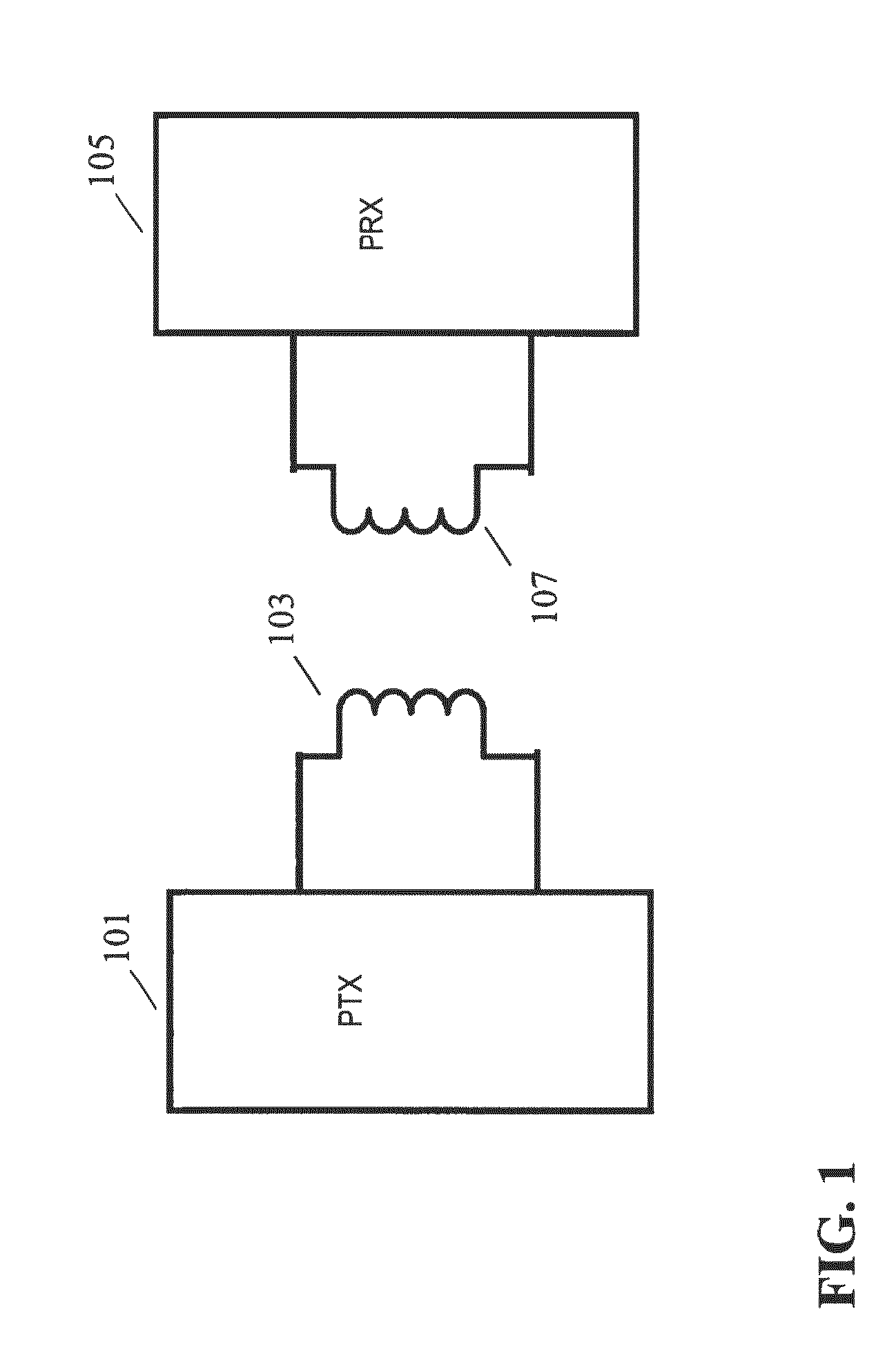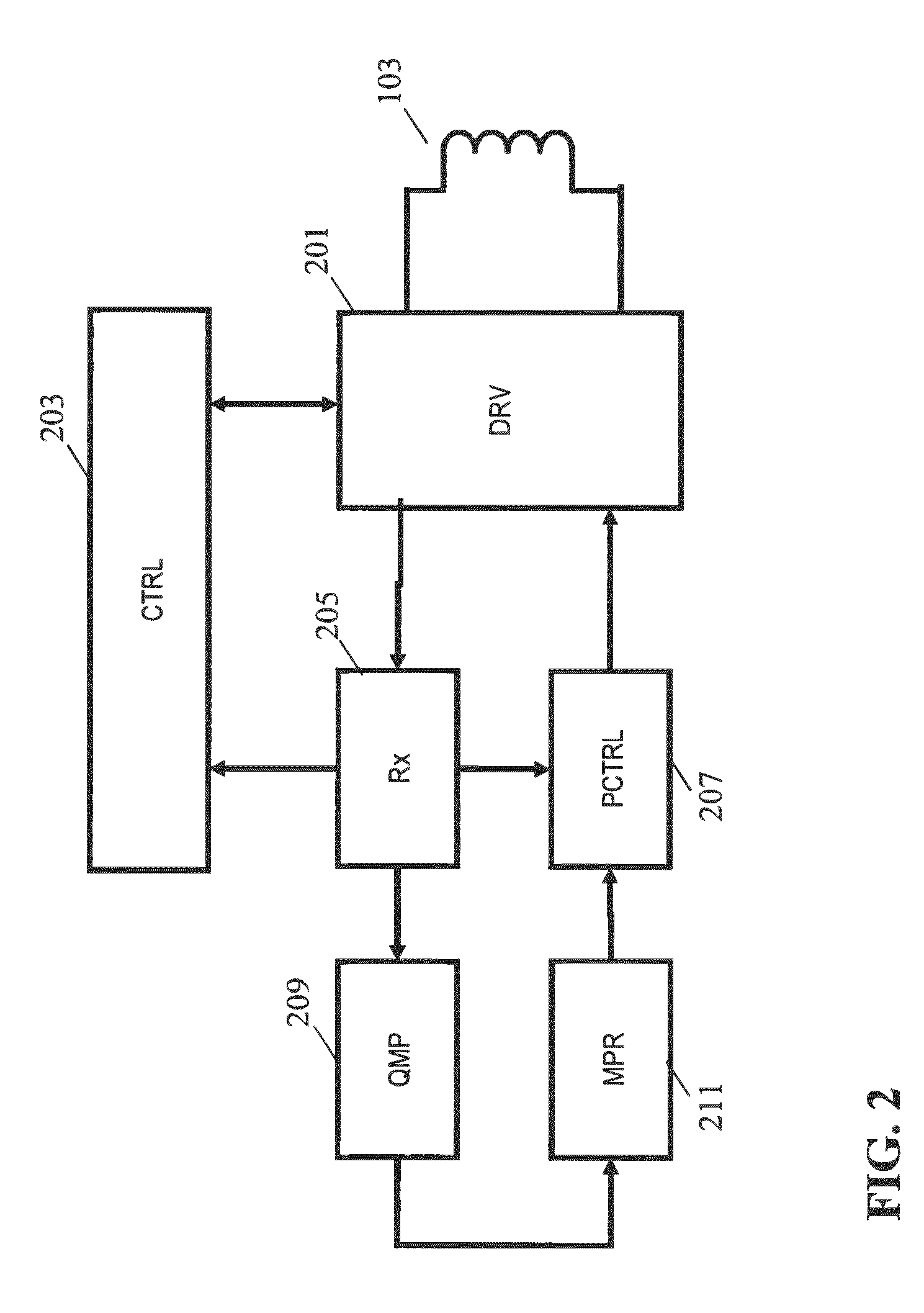Wireless inductive power transfer
a technology of inductive power transfer and wireless, which is applied in the direction of inductance, battery data exchange, exchanging data chargers, etc., can solve the problems of inconvenient use, impracticality, and battery use, and achieve the effect of reducing power signal variations and enhancing functionality
- Summary
- Abstract
- Description
- Claims
- Application Information
AI Technical Summary
Benefits of technology
Problems solved by technology
Method used
Image
Examples
example 1
[0177]In this example, the power transmitter 10 is comprised in a wake-up light. The wake-up light is used with a protective sleeve for a hand-held device (e.g. a phone). The sleeve provides wireless charging functionality to the device (e.g. an existing smartphone), and may be sold as an accessory to the wake-up light. In this example, the query message comprises a device identifier, i.e. a message including the device identifier is considered a query message. After completing the initial stage of the power transfer—i.e. the power receiver 105 sending its identification and configuration data—the power receiver 105 waits for a predetermined interval, before it starts to direct the power transmitter 101 to adjust its coil current—i.e. by sending appropriate power control error messages. The power transmitter 101 of the wake-up light charger will recognize the query contained in the identification data for the power receiver 105, and will adjust its coil current to reflect the define...
example 2
[0179]This example uses similar devices as example 1 except that the power receiver 105 is comprised directly in the smartphone. In the example, applications (apps) running on the smartphone can interact with the wireless charging functionality. In this second example, the device identification data is not used to carry the query. However, it is possible for the app running on the smartphone to send a query contained in a Proprietary Packet, i.e. the query message is in the form of a Proprietary Packet. As in the previous example, this query could direct the wake-up light charger to insert a specific modification to processing of power control error messages by the power transmitter 101. Specifically, the query can contain directions on how the power transmitter 101 should interpret the next few power control error messages in a different way—e.g. reverse the sign of the next two power control error messages. An advantage of using Proprietary Packets is that the app can send multipl...
example 3
[0180]In this example, a power receiver 105 seeks to determine whether it is coupled to a power transmitter 101 compliant with a revision / version of the standard which is higher or equal to that of the power receiver 105. In this example, the power transmitter 101 can interpret the version number sent by the power receiver 105 in the initial stage of the power transfer, i.e. the standards version reference forms the query. At the start of the power transfer phase, a power transmitter 101 matching the version, or which complies with a newer version, can insert a signature modification pattern to the responses to the power control error messages, i.e. it can change the coil current in a different way at the start of the power transfer phase. A particular advantage of this approach is that it provides a work-around for the issue of reserved packets being used incorrectly in legacy equipment (and specifically the problem that legacy power transmitters may terminate a power transfer phas...
PUM
 Login to View More
Login to View More Abstract
Description
Claims
Application Information
 Login to View More
Login to View More - R&D
- Intellectual Property
- Life Sciences
- Materials
- Tech Scout
- Unparalleled Data Quality
- Higher Quality Content
- 60% Fewer Hallucinations
Browse by: Latest US Patents, China's latest patents, Technical Efficacy Thesaurus, Application Domain, Technology Topic, Popular Technical Reports.
© 2025 PatSnap. All rights reserved.Legal|Privacy policy|Modern Slavery Act Transparency Statement|Sitemap|About US| Contact US: help@patsnap.com



